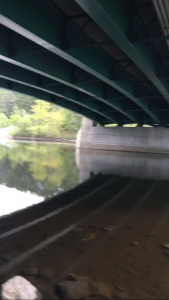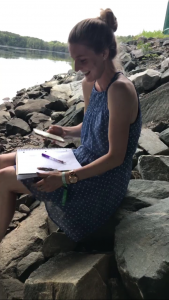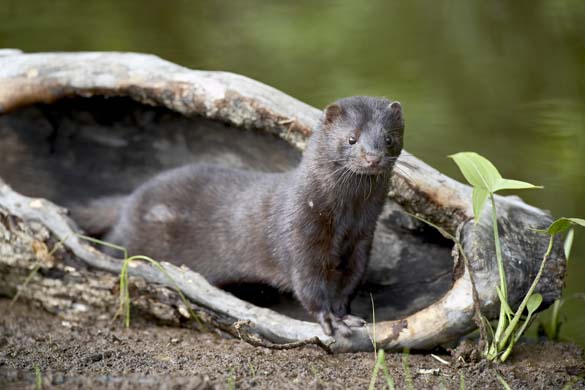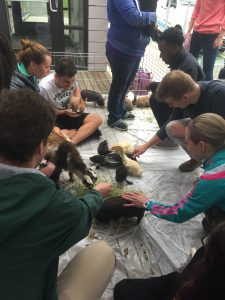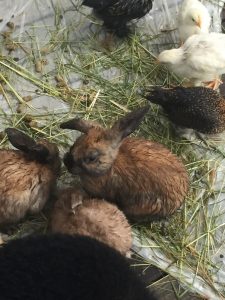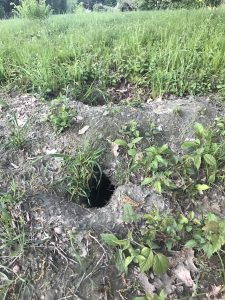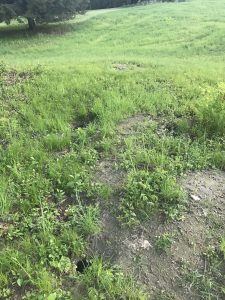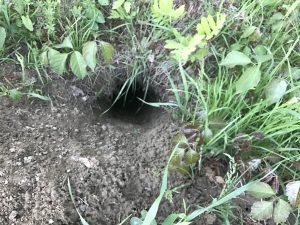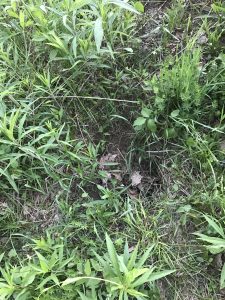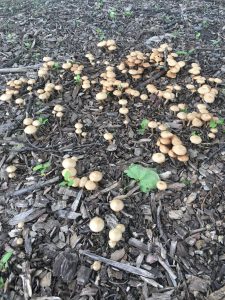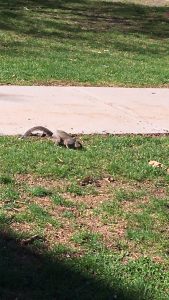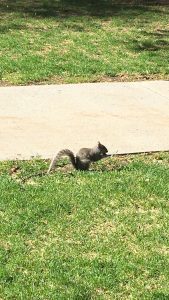Dear readers,
For the past week, I have been studying (cramming) for my CS 10 final exam in the stacks of Baker library. Sustaining myself on a diet of goldfish crackers and Novak sandwiches, I have rarely ventured far from my cell-like cubicle. The few times I excused myself from drawing red-black trees or practicing backtracking algorithms were for bathroom breaks and much needed sleep. In short, this past week has been grim and depressing, and I longed for “real” food and warm rays of sunshine instead of refrigerated sandwiches and artificial lighting.
Thus, when I exited Kemeny Hall after handing in my exam, I was elated to finally be outside again, stretching my arms wide to absorb some sorely missed vitamin D from the rays of sun shining brightly down at me. I headed towards the Hop, salivating at the thought of a freshly grilled, juicy burger. Yet, as I passed this breathtaking sight (see below) on the lower steps of the Hop, I couldn’t help but pull out my nature observation journal to sketch the scene before me:
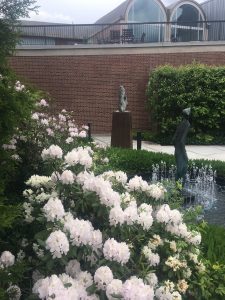
I approached a little oasis of green by the Hopkins Center

The view from another angle
Burgers after all could wait in the presence of this beautiful oasis of green which surrounded a small water fountain. From the densely-packed emerald green shrubbery sprouted white and pastel-pink flowers. Some had blossomed completely, opening up their beautiful petals for the world to see while others had only started to bloom, their petals still partially shut.

Some flowers had blossomed fully while others were only beginning to reveal their petals.
To some extent, I saw myself as these flowers that had only started to blossom. Through the things I have learned and experienced since coming to Dartmouth, I have gained a broader perspective of the world around me, opening myself up to new ideas and knowledge. Perhaps one day, I too may fully bloom like these flowers, showcasing all that I have learned to the world.
Curious as to what type of flower they were, I gently plucked a flower from its stem to observe more closely. five broad, delicate petals with ten stamens poking out from the center. The leaves were broad, smooth, and wavy with a waxy feel. Though the white and pastel pink flowers differed in terms of the color of their petals, the structure/ shape of their petals and their leaves appeared to be more or less the same.

A closer look
After comparing my observations to a flower identification resource guide (http://www.avasflowers.net/preview/flower-identification-resource-guide), I believe that the flowers I observed are of the genus Chaenomeles and known more commonly as the flowering quince. A popular plant appreciated for their colorful, showy flowers, the flowering quince’s flowers have been known to be red, orange, pink, or white, which explains why despite the differently colored flowers, the plants I observed looked structurally the same.
More than just being aesthetically pleasing, this little oasis of green put me more at ease. The stress that I had felt for the past week slowly melted away as I headed into the Hop to order my burger.
So, dear readers, I urge you to go and visit this little oasis while the flowers are in bloom to take in their beauty whenever you too are feeling stressed.
Best,
Leo L.

